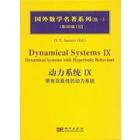
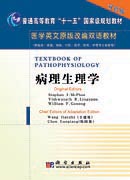
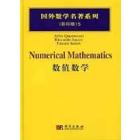

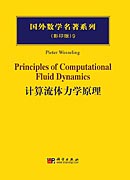
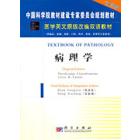
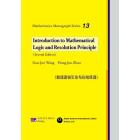

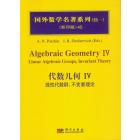
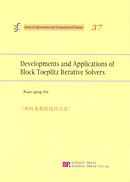
The first volume in this subseries of the Encyclopaedia is meant to familiarize the reader with the discipline Commutative Harmonic Analysis.
The first article is a thorough introduction, moving from Fourier series to the Fourier transform, and on to the group theoretic point of view. Numerous examples illustrate the connections to differential and integral equations, approximation theory, number theory,probability theory and physics. The development of Fourier analysis is discussed in a brief historical essay.
The second article focuses on some of the classical problems of Fourier series; it\\\\\\\'s a\\\\\\\"mini-Zygmund\\\\\\\"for the beginner. The third article is the most modern of the three, concentrating on singular integral operators. It also contains an introduction to Calderón-Zygmund theory.
样章试读
- 暂时还没有任何用户评论
全部咨询(共0条问答)
- 暂时还没有任何用户咨询内容
,1
2.4. Explicit Formulae for Hf
2.5. Singular Integral Operators
2.6. Multipliers. The Mikhlin-Hormander Theorem
2.7. Quadratic Functions
2.8. The Harmonic Conjugation in Lipschitz Classes
2.9. The Conjugate Fourier Series
§3. How Large is the Divergence Set?
3.1. The Carleson-Hunt Theorem
3.2. Kolmogorov's Example
3.3. An Application of the Carleson-Hunt Theorem
3.4. The Set of Divergence of the Fourier Series of a Continuous Function
3.5. Capacity of Divergence Sets
Chapter 3 Fourier Coefficients
§1. The Rate of Decrease
1.1. Smooth Functions
1.2. Lipschitz Functions
1.3. The Hausdorff-Young Inequality
1.4. Hardy's Theorem
1.5. The Khinchin-Kahane Inequality
1.6. Fourier Coefficients of LP-Functions,p>2
§2. Lacunary Series
2.1. Lacunary Sets
2.2. Relations with the Khinchin Inequality
2.3. The Sets of Type Ap
2.4. Sidon Sets
2.5. The Paley-Rudin Theorem
§3. Fourier Coefficients of Bounded Functions
3.1. General Remarks
3.2. A2-Sets
3.3. Sidon's Problem
§4. Fourier Coefficients of Measures
4.1. Positive Definite Sequences
4.2. The Class R. The Rajchman Theorem.
4.3. Relations between Properties of the Functions μ[O,+∞) and μ|(-∞,0)
4.4. Wiener'sTheorem
4.5. RieszProducts
4.6. Ivashev-Musatov's Theorem
4.7. Perfect Sets of Constant Ratio
4.8. Sets Defined in Terms of Asymptotic Distribution
4.9. W-Sets and A-Sets
4.10. H-Sets
4.11. W*-Sets
Chapter 4 Absolutely Convergent Fourier Series. Pseudomeasures. Pseudofunctions
§1. The Class A and Absolute Convergence
1.1. Definitions and General Remarks
1.2. The Sets of Absolute Convergence
§2. Sufficient Conditions for a Function to Belong to A
2.1. Bernstein's Theorem
2.2. The Zygmund-Bochkarev Theorem
2.3. Two Results Valid for More General Groups than T
2.4. Stechkin's Criterion
§3. A Comparison of the Classes A and U
3.1. Introductory Remarks
3.2. A Correction Theorem
3.3. Incorrigible Functions
3.4. Substitutions:The Class U
3.5. Substitutions:The Class A
3.6. 1nterpolation:TheClass U
3.7. Interpolation:The Class A
§4. Pseudomeasures,Pseudofunctions,Uniqueness
4.1. Definitions
4.2. The Problem of Uniqueness
4.3. Riemann's Theory of Trigonometric Series
4.4. A Condition Sufficient for Uniqueness
4.5. Perfect Sets of Constant Ratio
4.6. The Classes Uoa nd Mo
Chapter 5 Fourier Integrals
§1. Definitions and General Remarks
1.1. The Fourier Transform and the Fourier Integral
1.2. Remarks on Relations with Fourier Series
1.3. Properties of Fourier Transforms
§2. Recovering a Function. The Poisson Kernel. The Plancherel Theorem
2.1. Approximate Identities
2.2. The Poisson Kernel
2.3. Recovering a Function from its Fourier Transform
2.4. The Plancherel Theorem
2.5. The Hausdorff-Young Theorem.
§3. The Spaces Hp in the Half-plane. The Hilbert Transform
3.1. The Spaces Hp
3.2 The Paley-Wiener Theorem
3.3. The Hilbert Transform
References
III. Methods of the Theory of Singular Integrals:Hilbert Transform and Calderón-Zygmund Theory
Introduction
Chapter 1 Preliminaries
§1. Notations
1.1. Geometry
1.2. Lipschitz Domains
1.3. Function Spaces
1.4. Weak Type (1-1)
1.5. Fourier Transform
1.6. Probability Theory
§2. Maximal Functions
2.1. The Hardy-Littlewood Maximal Function
2.2. Kolmogorov's Inequality
2.3. Carleson's Imbedding Theorem
§3. CoveringTheorems
3.1. Whitney Theorem
3.2. Calderón-Zygmund Decomposition
§4. Weight Norms
4.1. Muckenhoupt Condition
4.2. The Muckenhoupt Maximal Theorem
§5. Distribution Function Inequalities
§6. Rademacher Functions
§7. Harmonic Functions
7.1. Poisson Integral
7.2. Maximal Functions
7.3. Green's Formula
7.4. Harmonic Vector Fields
§8. Hardy Classes
8.1. Hardy Classes of Analytic Functions
8.2. Real Hardy Classes
8.3. Atoms
§9. Bounded Mean Oscillation
9.1. The Space BMO (Rn)
9.2. Ch. Fefferman's Duality Theorem
Chapter 2 Hilbert Transform
§1. Definition and Elementary Properties
1.1. Hilbert Transform on the Real Line
1.2. Hilbert Transform on the Circle
1.3. Fourier Transform
1.4. Maximal Operator
1.5. Privalov's Proof
1.6. N.N. Luzin on Singular Integrals
§2. Hilbert Transform in L2
2.1. Boundedness of Operator H
2.2. Hilbert Transform and Fourier Series
2.3. The Helson-Szegö Theorem
§3. Hilbert Transform in L1
3.1. Kolmogorov's Theorem
3.2. Harmonic Estimates
3.3. Explicit Formulae
3.4. Further Estimates in L1
3.5. A-Integral
§4. Hilbert Transform in LP
4.1. Theorem of M. Riesz
4.2. Other Proofs of M. Riesz' Theorem
4.3. The Case p=∞
4.4. Boyd's Theorem
§5. Applications of Brownian Motion
5.1. Preliminaries
5.2. Weak Type (1-1)
5.3. Brownian Maximal Functions
§6. Cauchy Type Integral
6.1. Definition and Basic Properties
6.2. Existence of Boundary Values. LP-Estimates
§7. Hilbert Transform in Holder Classes.
7.1. The Plemelj-Privalov Theorem
7.2. Other Methods of Proof.
7.3. Smoothness of Cauchy Type Integrals
Chapter 3 Calderón-Zygmund Theory
§1. Calderón-Zymund Operators
1.1. Definition
1.2. Connections Between an Operator and a Kernel. Maximal Operator
1.3. The Calderón-Zygmund-Cotlar Theorem
§2. Examples of Calderbn-Zygmund Operators
2.1. The M. Riesz Transform
2.2. Homogeneous Kernels
2.3. Integrals of Imaginary Order
2.4. Calderón Commutators
2.5. Pseudodifferential Operators
2.6. Anisotropic Analogues
§3. L2-Estimates
3.1. Estimates of the Fourier Transform
3.2. The Cotlar-Stein Lemma
3.3. L2-Estimates and the Carleson-Hunt Theorem
§4. Method of Rotations
4.1. Formulae of the Rotation Method
4.2. Results of the Rotation Method
4.3. Sjolin'sTheorem
§5. Estimates in LP
5.1. The Main Inequality
5.2. The Weak Type (1-1) Estimate
5.3. LP-Estimates
5.4. Atoms and the Space H1
5.5. Marcinkiewicz' Integral
5.6. The Case p=∞
5.7. Hypersingular Integrals
§6. The Maximal Operator
6.1. Decomposition of a Function
6.2. Estimates of the Maximal Operator
6.3. Estimates of the Distribution Function
6.4. The Fefferman-Stein Function f#
§7. Weighted and Vector Analogues
7.1. Weighted Estimates of Calderbn-Zygmund Operators
7.2. Vector Analogues of Calderbn-Zygmund Operators
7.3. Connections Between Weighted and Vector Estimates
Bibliographical Notes
References